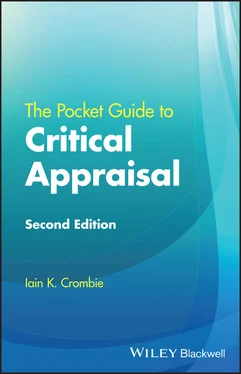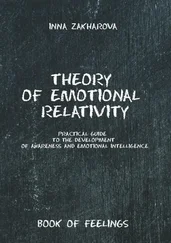Several terms are used for this type of study including: case–control , case‐referent , case‐comparator , and case‐comparison . Because the method looks backwards in time it is sometimes called a retrospective study , but this term can be used with cohort studies.
The RCT should be the easiest method to identify. This design is used to test whether one health care intervention is superior to another. RCTs are most often used to test drugs, but they can be used to investigate many different types of health care interventions: surgery, vaccination, anti‐pressure sore mattresses, and health education. RCTs often compare a new treatment against the currently accepted best treatment. If there is no existing treatment, the new one is compared against a placebo (an inert substance or a dummy procedure).
RCTs are always concerned with effectiveness. The key element of this design is that patients are randomly allocated to receive a new treatment or to the conventional one (or a placebo). The outcome of the new treatment is compared with that of the conventional one, identifying which is superior. RCTs are also concerned with the side effects of treatments. Most RCTs compare two treatments, but sometimes more than two treatments can be investigated. This adds complexity to the conduct and analysis of the study, although the resulting study is a valid RCT.
The phrase clinical trial is often used as shorthand for an RCT. However, clinical trial can refer to studies in which patients are allocated treatment in a non‐random way (non‐randomised studies). For example, cohort studies can be used to assess effectiveness: a group of treated patients and an independent control group are followed up to see which group gains most benefit.
The term randomisation almost always identifies an RCT, as does the equivalent phrase random allocation . (Note that the term random selection may refer to a survey.) The terms blinding , placebo , effectiveness , efficacy , and evaluation , or phrases like assess the value of or improve the outcome , can be used in both RCTs and non‐randomised studies.
Cohort studies that evaluate the effectiveness of interventions
An increasingly common research design is a special type of cohort study that evaluates the effectiveness of treatments. It compares the outcomes among a group of patients given one treatment with outcomes in other patients who have the same disease but were given a different treatment. The difference from a conventional RCT is that patients are not randomised to treatments. Instead the clinician responsible for the patient decides which treatment should be given. This type of study evaluates treatments as they are used in routine clinical practice. A common form of this design uses electronic health records to identify patients with a defined disease and the treatments that they were given. The effects of the treatments on the outcome measures are also obtained from electronic data. When the two groups are recruited and followed up in the same time period, this design is called a concurrent cohort study . In a different form of this design, recently diagnosed patients are given the new treatment and are compared with patients from the past who were given a different treatment. These studies are called historical cohort studies .
The essential feature of this design is that the treatment patients receive is selected by the doctors who are responsible for their care, based on an assessment of their specific clinical circumstances. Rather than being randomised to treatment groups, clinical judgement is used to decide which treatment will be best for each patient. As a result, the patients given one treatment may differ systematically from those given the other treatment. This is the major weakness of the research design, as the two groups of patients will be different at the start of the study (i.e. before they receive their treatment).
A special type of cohort treatment study is the quasi‐randomised study . In this design patients are assigned by the researchers to treatment groups using a non‐random method such as date of clinic appointment (assignment by alternate days) or date of birth (assignment by odd or even dates). Because the assignment process is predictable, it could be tampered with, creating a risk of bias. This design is best viewed as similar to an RCT, but one at high risk of bias due to poor concealment of treatment allocation.
There are no specific terms which identify this research design. The terms concurrent cohort study and historical cohort study could refer to this design, but they could also refer to conventional cohort studies (those which do not evaluate the effectiveness of treatments). The term non‐randomised study is often used for this type of study, although that label refers to a group of research designs which include case–control studies, surveys, interrupted time series, and case series.
Systematic reviews seek to identify all the papers published on a specific health topic to obtain a summary of the findings from all the relevant studies. They commonly use the statistical technique of meta‐analyses to combine the findings from each study. In effect, meta‐analysis produces results which are comparable with those from one very large study. This approach overcomes the weakness of individual studies, which, because of their small size, can be greatly affected by the play of chance.
Systematic reviews search electronic databases of research studies, such as MEDLINE, EMBASE, and CINAHL, to locate published studies, using carefully chosen combinations of key terms. Papers are carefully screened to identify the relevant ones. The chosen papers are commonly referred to as the primary studies. Key data items, such as effect size, standard deviation, and sample size, are extracted from each study. These data are usually, but not always, combined to provide an overall estimate of effect size using meta‐analysis.
There are no complications. The design of a systematic review differs substantially from all other types of study, so that an inspection of the methods used should identify it.
Either of the terms systematic review or meta‐analysis identifies the design. If there is doubt, then the use of a search strategy should provide confirmation. The terms review and narrative review can refer to a systematic review or to a study with a less complete collection of primary studies. An overview usually indicates a collection of systematic reviews, but it can be used for a set of primary studies.
Конец ознакомительного фрагмента.
Текст предоставлен ООО «ЛитРес».
Прочитайте эту книгу целиком, купив полную легальную версию на ЛитРес.
Безопасно оплатить книгу можно банковской картой Visa, MasterCard, Maestro, со счета мобильного телефона, с платежного терминала, в салоне МТС или Связной, через PayPal, WebMoney, Яндекс.Деньги, QIWI Кошелек, бонусными картами или другим удобным Вам способом.












